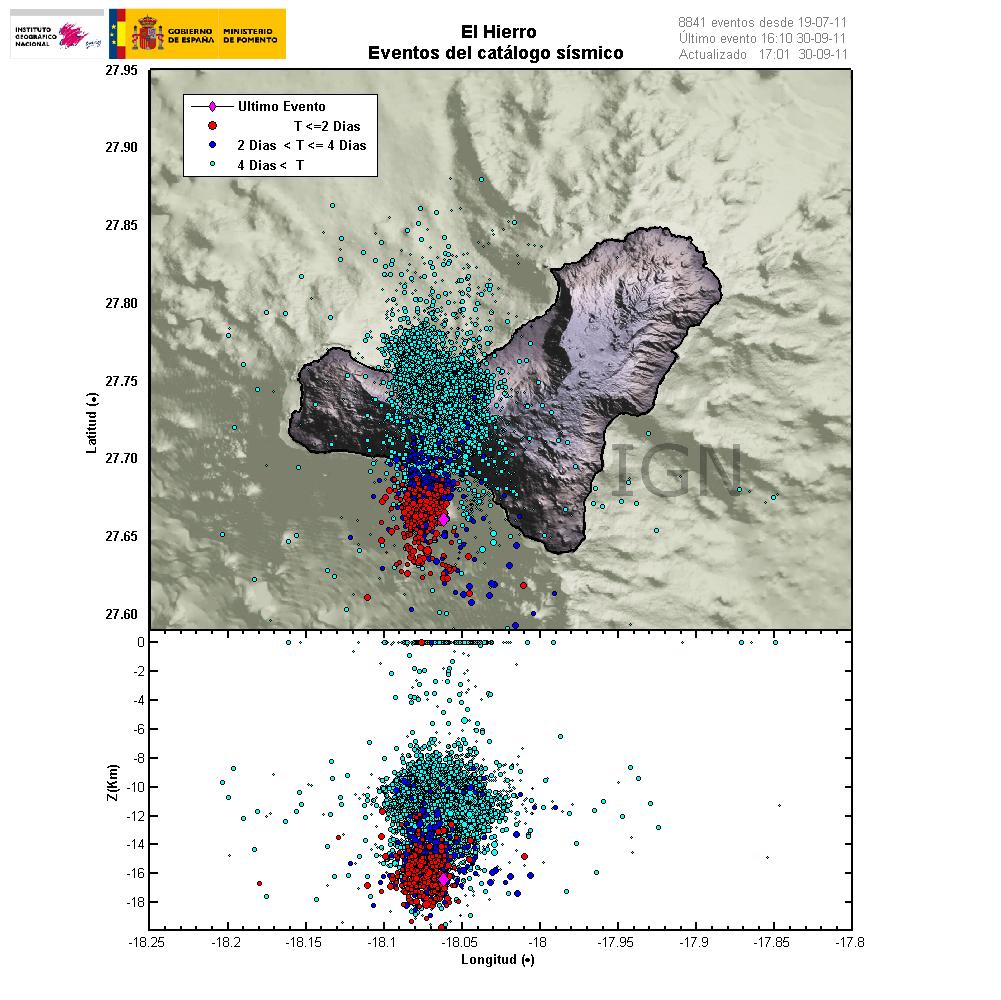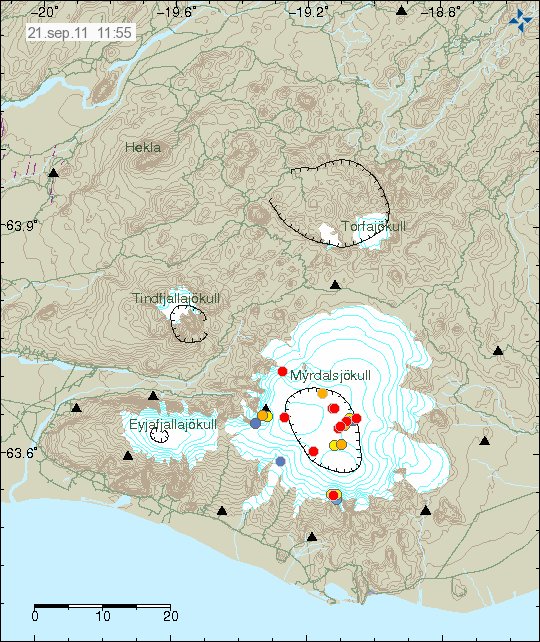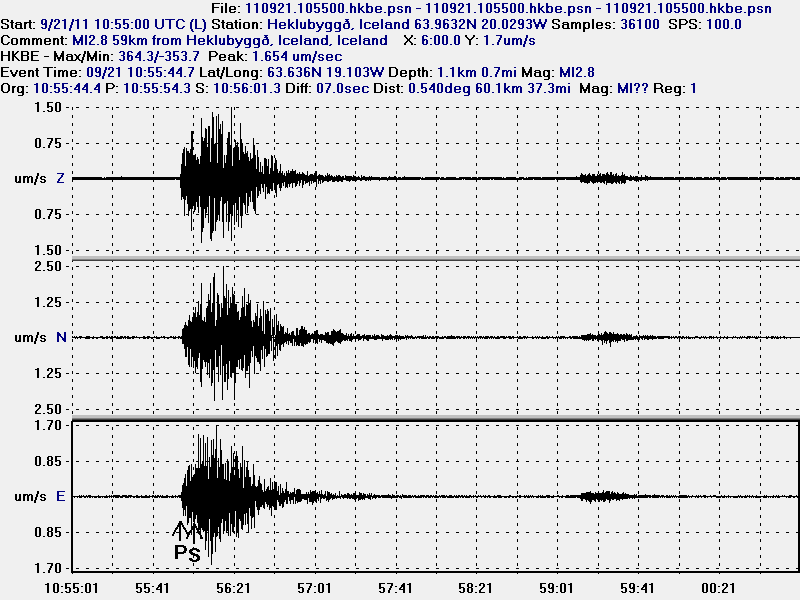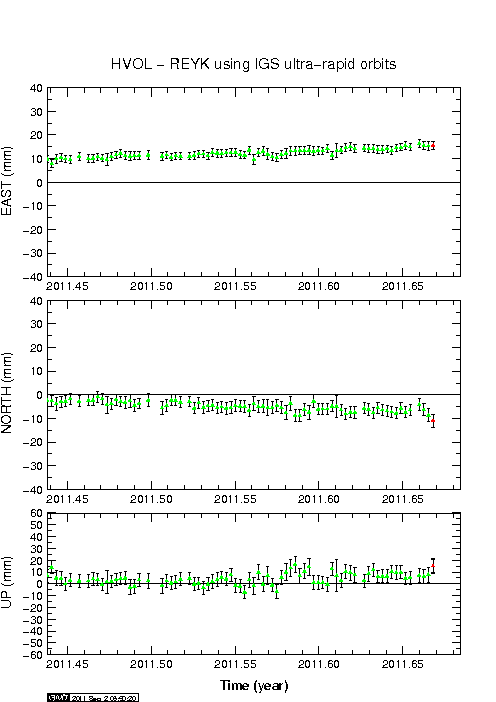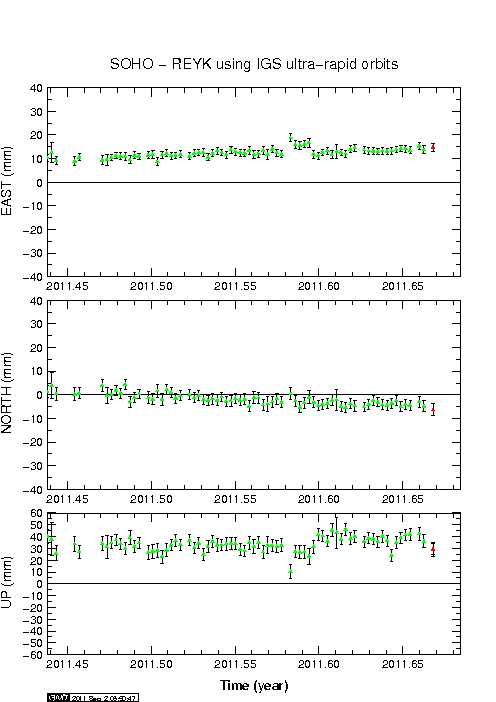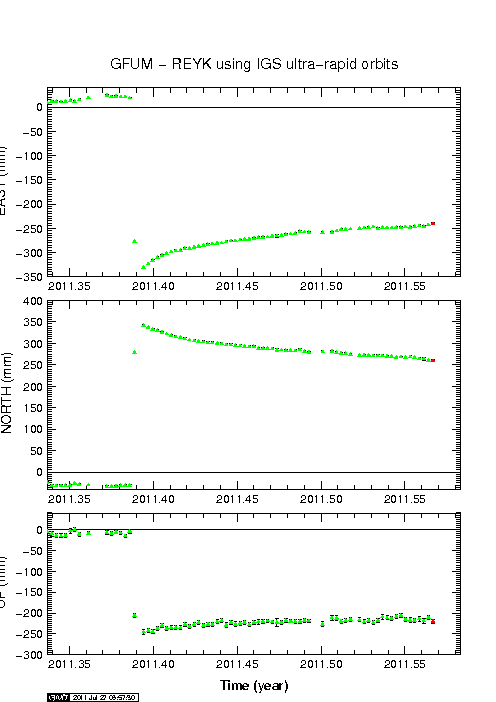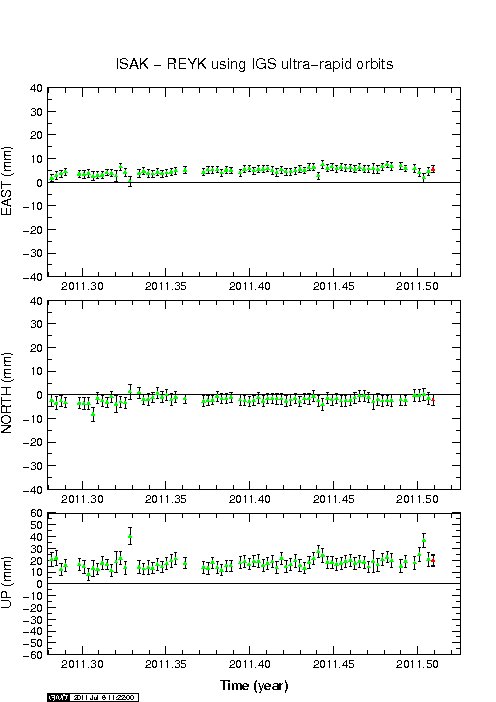There has not a lot changed in the past few hours since the earthquake swarm did start in Katla volcano. Eruption has not yet started in Katla volcano and when it might start is still a mistery.
Current map of the earthquake activity.
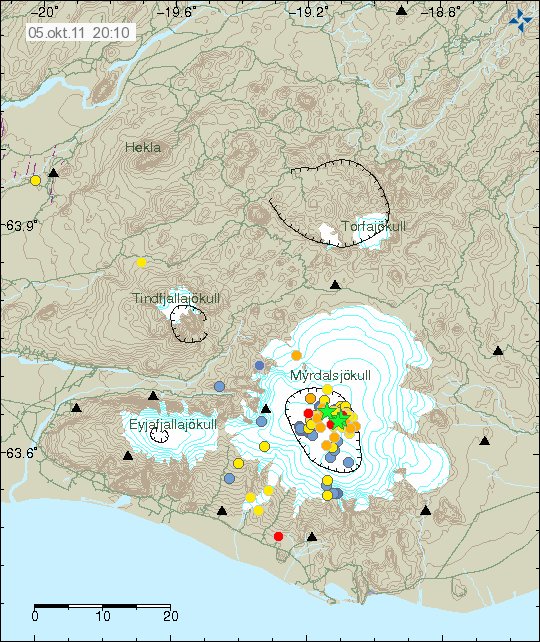
Current earthquake activity in Katla volcano. Copyright of this picture belongs to Iceland Met Office.
Here are traces from my Heklubyggð geophone. But that is currently the geophone that I have that is closest to Katla volcano. I am collecting donations so I can buy two new geophones. The blog post about that can be found here. I do not expect to have the geophone in place before a eruption starts in Katla volcano this time around. So far the donations are up too 5,410.74 DKK, so I am not far from what I need to collect. I do not have to pay customs of this according to a email I got from the customs office when I did ask about it. But I have too pay 25,5% VAT on this when it gets here. That might be a good amount I think in Icelandic Kronas (ISK).

One of the large earthquakes. This is not the strongest earthquake in the earthquake swarm that took place this morning in Katla volcano. This is also a double earthquake, that is two earthquakes taking place at the almost the same time. That is the reason for the odd looking wave form on this earthquake trace. This picture is released under Creative Commons licence. See Licence web page for more details.

A ML3.0 earthquake that took place in Katla volcano this morning. This picture is released under Creative Commons licence. See Licence web page for more details.

The largest earthquake in the earthquake swarm this morning. Its size was ML3.55 with the depth just short of 1 km. This picture is released under Creative Commons licence. See Licence web page for more details.

A ML2.94 earthquake in Katla volcano this morning. This picture is released under Creative Commons licence. See Licence web page for more details.
So far it has quieted down in Katla volcano. But that does not mean a lot. As magma can go on the move at any time. Without any warning at all. So monitoring Katla volcano is important with that fact in mind. According to Iceland Met Office, this is the largest earthquake swarm in Katla volcano caldera since the year 2002.
I am expecting more strong earthquakes to take place in Katla volcano. But it is impossible to know when a new earthquake swarm might start in Katla volcano and how large and long it is going to last. For the moment, it is just wait and see.
Iceland Met Office has put up a news about this in English. Thanks too the readers how pointed this out!
Earthquake activity in Katla volcano October 2011
Icelandic News about this earthquake swarm.
Snarpasta hrinan í Kötlu frá 2002 (Rúv.is, Icelandic)
Snörp hrina í Mýrdalsjökli í nótt (Rúv.is, Icelandic)
Snörp hrina í Kötlu (Vísir.is, Icelandic)
Sterkir skjálftar undir Mýrdalsjökli (mbl.is, Icelandic)
Um 20 skjálftar yfir 2 stig (mbl.is, Icelandic)


